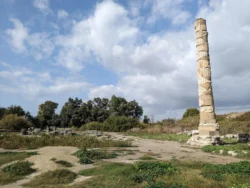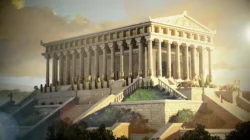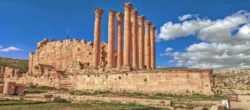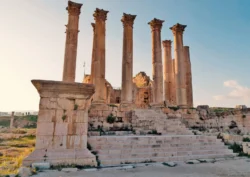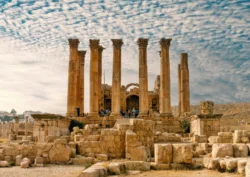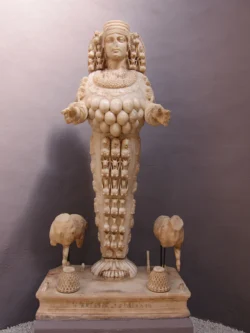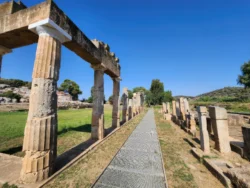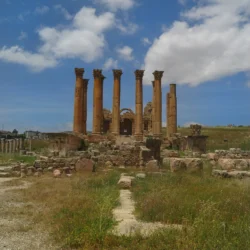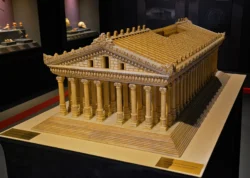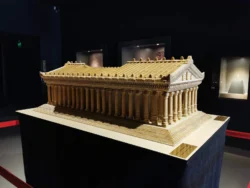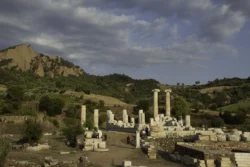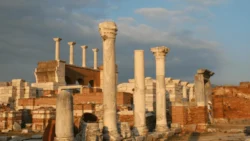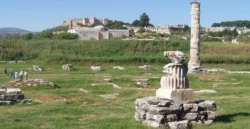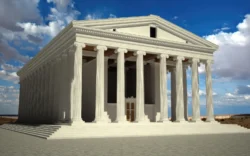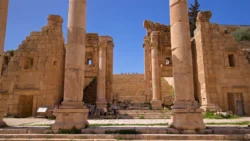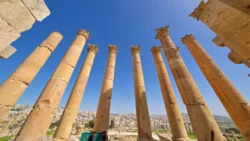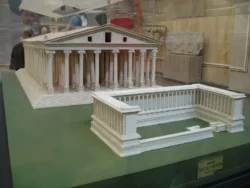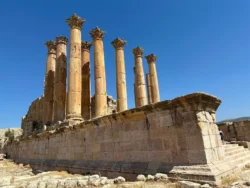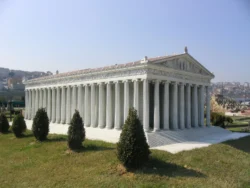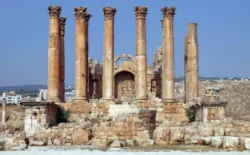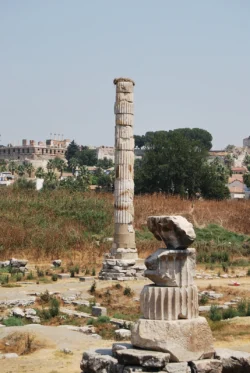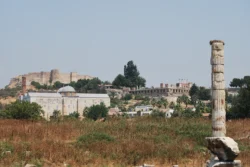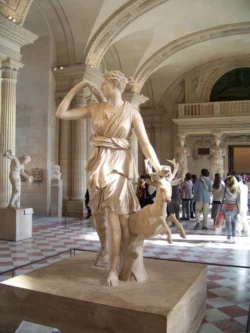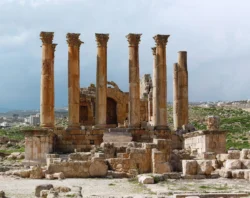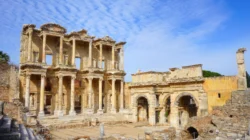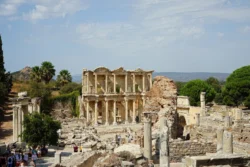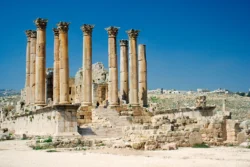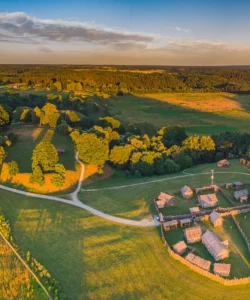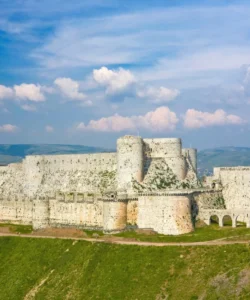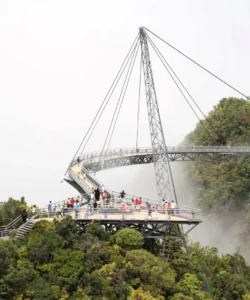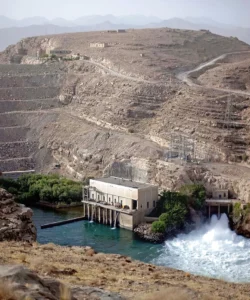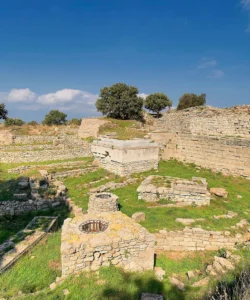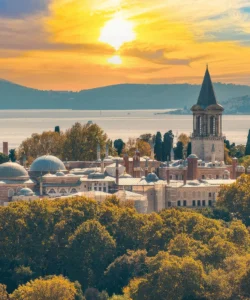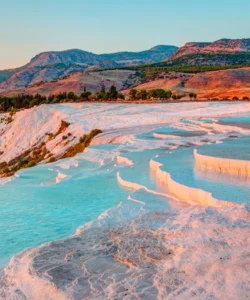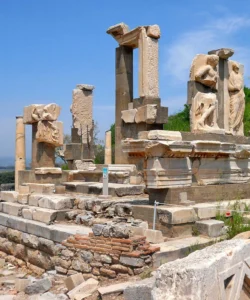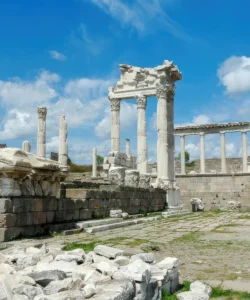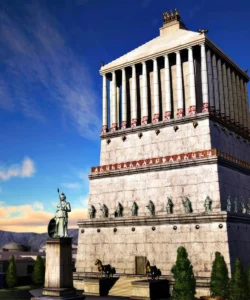The Temple of Artemis (also known as the Artemision or Temple of Diana) was a magnificent Greek temple dedicated to an ancient, localized form of the goddess Artemis. Located near the ancient city of Ephesus (modern-day Selçuk, Turkey), it was considered one of the Seven Wonders of the Ancient World due to its immense size, dazzling marble construction, and rich artistic adornments. It was destroyed and rebuilt multiple times throughout its history, with only foundations and a solitary column remaining at the site today.
Listen to an introduction about Temple of Artemis
Name and Address
- Name: The Temple of Artemis at Ephesus (Ancient Greek: Ἀρτεμίσιον; Turkish: Artemis Tapınağı), also known as the Temple of Diana.
- Address: The archaeological site is located on the edge of the modern town of Selçuk, near the ancient city of Ephesus, İzmir Province, Turkey.
How to Get There
The site of the Temple of Artemis is easily accessible from the town of Selçuk, a popular tourist destination in Turkey.
- By Air: The closest major airport is Izmir Adnan Menderes Airport (ADB), located approximately 75 kilometers (47 miles) north of Selçuk. From the airport, you can take a train, bus, or taxi to Selçuk.
- By Road: Selçuk is well-connected by intercity buses from major Turkish cities. Once in Selçuk, the Temple of Artemis is within walking distance from the town center. It is not located within the main archaeological park of Ephesus Ruins, but is about 2 km (1.2 miles) away.
- On-Site: The site is open daily, and there is no admission fee to visit the remains of the temple. While only a single reconstructed column and scattered fragments remain, the sheer scale of the original foundations can still be appreciated. Many tours to Ephesus often include a stop at the Temple of Artemis.
Landscape and Architecture
The Temple of Artemis was an architectural marvel, renowned for being one of the largest Greek temples ever built and the first to be constructed entirely of marble. Its design evolved through several reconstructions, each aiming for greater grandeur.
- Immense Scale: The last and most famous iteration of the temple measured approximately 137 meters (450 feet) in length and 69 meters (225 feet) in width, making it nearly double the size of the Parthenon in Athens.
- Marble Construction: It was entirely built of gleaming white marble, a significant feat for its time.
- Colonnade: The temple featured an impressive double row of 127 Ionic columns, each towering around 18.3 meters (60 feet) high. Many of these columns were elaborately carved with reliefs depicting mythological scenes, including battles between Greeks and Amazons.
- Artistic Adornments: The temple was adorned with exquisite sculptures and artworks by renowned Greek sculptors like Scopas (who also worked on the Mausoleum at Halicarnassus), Polyclitus, Pheidias, Cresilas, and Phradmon. These included free-standing statues and decorative friezes.
- Cult Statue: Inside the temple housed a cult statue of Artemis Ephesia, a localized form of the goddess often depicted with multiple breast-like protuberances, emphasizing her role as a fertility goddess.
- Location: Unusually for a major Greek temple, it was built on marshy ground, believed to be a precaution against earthquakes.
- Destruction: The temple faced multiple destructions throughout its history due to fires (famously by Herostratus in 356 BCE), earthquakes, and invasions (by the Goths in 262 CE). The final destruction occurred in 401 CE by a Christian mob, after which its stones were quarried for other buildings. Today, only the foundations and a single reconstructed column stand as a poignant reminder of its former glory. Many excavated fragments and sculptures are preserved in the British Museum.
What Makes It Famous
- Architectural Grandeur: Its colossal size, all-marble construction, and the sheer number and height of its intricately carved columns made it an unparalleled feat of ancient engineering and design.
- Religious Significance: As a major sanctuary dedicated to Artemis Ephesia, it was a significant pilgrimage site, attracting devotees and merchants from across the ancient world, making Ephesus an important spiritual and commercial hub.
- Artistic Masterpiece: The temple was a repository of magnificent artworks, including sculptures by some of the most celebrated artists of antiquity, showcasing the pinnacle of Hellenistic art.
- Symbol of Resilience: Despite being destroyed and rebuilt multiple times, its continuous reconstruction demonstrated the enduring devotion of the Ephesians to their goddess and their commitment to monumental architecture.
- One of the Seven Wonders: Its exceptional characteristics earned it a coveted place on the earliest known lists of the Seven Wonders of the Ancient World, cementing its legendary status.
Differences from Some Other Wonders
- Multiple Destructions and Reconstructions: Unlike wonders like the Great Pyramid of Giza, which has stood largely intact for millennia, the Temple of Artemis is unique for having been destroyed and rebuilt multiple times over centuries, each time rising grander than before, only to be ultimately lost. This cycle of destruction and rebirth is a defining characteristic.
- Fertility Goddess Focus: While other wonders were dedicated to various deities or served as tombs for rulers, the Temple of Artemis was specifically dedicated to a localized, fertility-focused form of Artemis (Artemis Ephesia), whose iconography differed significantly from the traditional Greek Artemis.
- Marshy Foundation: Its deliberate construction on marshy ground as a supposed earthquake deterrent was an unusual engineering choice for such a massive structure, contrasting with the solid ground chosen for many other monumental buildings.
- Complete Loss of Original Structure: While remnants of other wonders exist, the Temple of Artemis is almost entirely lost, with only its foundations and a single reconstructed column at the original site. Its fame largely relies on ancient descriptions and the scattered artifacts found elsewhere.
Temple of Artemis Photos:

